Bridge Piercing: Pain, Cost, Side Effects And After Care
Piercings are all the rage but truth be told, some piercings rage more than others!
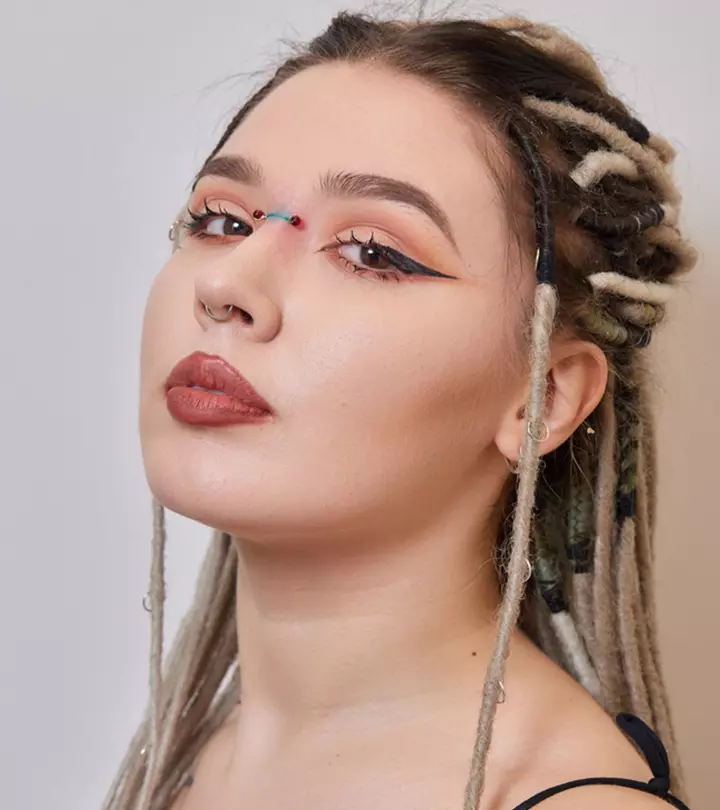
Image: Shutterstock
A bridge piercing, commonly referred to as an Erl piercing, is a unique form of body modification. It is a type of facial piercing that involves horizontally placing a small barbell across the bridge of your nose. Since it sits right between your eyes, the piercing becomes a bold focal point on your face. A bridge piercing is known for its edgy appeal and allows for a variety of creative choices in jewelry. It provides a lot of room to customize your look according to your preferences. In this article, we look at the practical aspects of what getting a bridge piercing looks like. Read on to know more.
 Piercing Guide: Bridge Piercing
Piercing Guide: Bridge Piercing- Placement: A horizontal piercing placed over the bridge of the nose
- Best Jewelry: Straight or curved barbells made with gold, surgical stainless steel, or titanium
- Cost: $30 to $60
- Pain Level: Low to medium
- Healing Time: 3 to 6 months
In This Article
Types Of Bridge Piercings
Bridge piercings are available in different types, such as:
- Single Bridge Piercing: This is the most popular kind of bridge piercing and involves inserting a single horizontal barbell over the nose bridge.
- Double Bridge Piercings: This consists of two piercings arranged in parallel on the bridge, adding a symmetrical and eye-catching appearance.
- Vertical Bridge Piercing: Here, a barbell is inserted vertically on the nose bridge, adding a chic twist to a classic bridge piercing.
Now that you have explored the different types of bridge piercings, it is important to consider how each variation may impact the pain level during the procedure. Scroll down to know more.
Key Takeaways
- A bridge piercing is a type of facial piercing that sits over your nose bridge.
- Choose an appropriate type of jewelry such as straight or curved barbells in materials such as titanium or surgical steel for safety and comfort.
- Wait for it to fully heal before changing jewelry. Ensure that the new ones are sanitized.
- Potential side effects include scarring, swelling and discomfort, infections, rejection, and bumps.
Do Bridge Piercings Hurt?
There are different types of face piercing that help you express your unique style in your terms, and one of the most unconventional is Bridge Piercings. However, getting a bridge piercing may involve momentary discomfort, much like any other form of piercing. The needle has to pass through the skin of your nose there is no cartilage at bridge piercing place. The pain experienced can vary from person to person. The sensation is typically brief and lasts only for the duration of the piercing. While some describe it as a quick pinch or pressure, others may find it slightly more intense and experience bleeding. It is crucial to have the procedure done by a skilled and experienced piercer to ensure precision and minimize discomfort. After the initial pain, any lingering discomfort usually subsides quickly.
Izzi, a blogger, shares her experience of getting a bridge piercing and having to deal with excessive bleeding. She writes, “The only problem I’m having with it is that it will NOT stop bleeding (i).” She continues, “It isn’t gushing or anything, but it is getting annoying.”
The pain is momentary and the swelling fades in 2-3 days but how long does it take for the piercing to heal? Let us find out in the next section.
Bridge Piercing Healing Time And Pain Level
The healing time of a bridge piercing and the level of pain associated with it varies from person to person. It can take around 8 to 12 weeks for a bridge piercing to heal fully. Generally, you can expect the initial healing process to take several weeks to 3-6 months (1). During the healing period, you may experience mild discomfort, tenderness, and occasional throbbing.
While everyone’s pain tolerance differs, keeping the area clean and avoiding irritants can help manage discomfort. The pain is more pronounced right after the piercing; it gradually diminishes as the healing progresses. You may take over-the-counter pain relievers to help manage the pain during the initial days. Overall, be patient, and if you notice any prolonged pain or unusual symptoms, consult with your professional piercer for guidance on ensuring a smooth healing process.
You must follow proper aftercare instructions for body piercings, such as Bridge piercing, to avoid complications. The next section lays out some guidelines for it.
Bridge Piercing Aftercare
View this post on Instagram
Ensuring proper aftercare is crucial for a successful bridge piercing. Follow these steps to promote healing and minimize complications (2):
- Keep The Area Clean: Clean the piercing twice daily with a sterile saline solution and a cotton swab to prevent infection. Gently remove any crust or debris around the jewelry. Using a warm compress on a piercing can help soothe irritation and promote healing by increasing blood flow to the area.
- Keep Your Hands Off: Avoid touching the piercing with unwashed hands to prevent introducing bacteria. Minimize movement and friction during the healing period.
- Say No To Swimming: Steer clear of swimming pools, hot tubs, and other bodies of water during the initial healing period. Submersion can introduce contaminants.
- Keep Your Hair Away: Keep your hair away from the piercing while it is healing. Loose hair can accidentally tug on the jewelry and cause irritation.
- Choose Gentle Products: Use mild, fragrance-free, antibacterial soap for overall facial cleansing as harsh agents and beauty products can irritate the piercing site.
- Watch Out For Red Flags: Be wary of signs of infection such as excessive redness, swelling, or discharge. If you notice anything unusual, consult your piercer or healthcare professional immediately.
- Avoid Sleeping On Stomach: Sleeping on your stomach during the healing period of a bridge piercing might not be the best idea, as it can put pressure on the piercing and potentially cause irritation or slow down the healing process. It’s generally recommended to sleep on your back or side to avoid putting direct pressure on the piercing site.
- Avoid Changing Jewelry During The Healing Period: It’s not safe to change the jewelry during the healing period of a bridge piercing. Wait until it’s fully healed. However, if you need to change it, have it done by a professional piercer.
 Pro Tip
Pro TipLike every other type of cartilage piercing, this one also needs proper care to avoid complications in the form of side effects. But what are they? Let us find out in the next section.
Bridge Piercing Side Effects
A bridge piercing is stylish, but it also carries some potential side effects. Let us look at some of them below (3), (4):
- May Lead To Scars: Improper care may lead to visible scarring. Clean the piercing regularly and follow aftercare instructions to minimize scarring risks.
- May Not Be Compatible With Glasses: The placement of the bridge piercing may pose challenges if you wear glasses. You may have to opt for alternative eyewear such as contact lenses to avoid pressure and discomfort.
- May Cause Infection: Infections can occur if proper hygiene is not maintained. Watch out for redness, excessive swelling, and pain, and seek prompt care if suspected.
- May Be Rejected By The Body: The body may reject the bridge jewelry over time depending on the metal it is made of. Address any signs of rejection, such as discomfort, migraines, and formation of scars while opting for jewelry made of hypoallergenic metals.
- May Cause Bumps: Bumps may form due to irritation or infection. Maintain good hygiene, avoid excessive movement, and consult a healthcare professional if bumps persist.
These side effects may affect the appearance and longevity of the bridge piercings, so caution is advised. The risk of infection may be significantly reduced if you are aware of the kind of jewelry that suits you the best. The following section helps you choose just that.
Bridge Piercing Jewelry
View this post on Instagram
Selecting the right jewelry is crucial to ensure both style and comfort. The best type of jewelry for bridge piercings is straight or curved barbells. It is a classic choice that provides a clean and sleek look to the piercing. Other jewelry that you can go for after the piercing heals include decorative ends, featuring gems, spikes, or unique designs featuring straight barbells. When it comes to metals, only go for jewelry that is made of safe and hypoallergenic materials to avoid the risk of rejection and infection. Some of those metals are (5), (6):
- Titanium: It is a lightweight and hypoallergenic metal. It is known for its durability, corrosion resistance, and minimal risk of causing skin reactions.
- Surgical Steel: It is a cost-effective yet high-quality option. It is resistant to corrosion and tarnishing, making it suitable for long-term wear.
- Gold: Add a touch of luxury with gold jewelry. Opt for 14k or 18k gold which is less likely to cause skin irritation compared to other metals.
- Niobium: It possesses hypoallergenic properties that may be helpful to keep your pierced bridge healthy after healing. It is an excellent choice for those with sensitive skin.
Wearing tight jewelry during healing can irritate the piercing and slow down healing. It’s important to wear properly fitted jewelry to avoid complications. Choosing the right jewelry goes a long way to ensure that your bridge piercing heals well, but how much does the whole thing cost? Let us find out in the next section.
How Much Is A Bridge Piercing?
View this post on Instagram
The cost of a bridge piercing depends on factors such as the reputation of the studio or piercer you are visiting and your choice of jewelry. On average, you can expect to pay anywhere from $30 to $60 or more. High-end studios or those in metropolitan areas might charge higher prices. Keep in mind that this cost typically covers the professional service, initial jewelry, and aftercare instructions. It is important to choose a reputable piercer even if the price seems steep to ensure a safe and hygienic experience. Inquire about the total cost and any additional fees before making a piercing appointment to make an informed decision.
 Trivia
TriviaWhile it is cheaper than other types of piercings, it is still important to keep in mind that it will take some extra care for it to heal nicely. To do so, you need to know how to change your bridge piercing without compromising it.
When And How To Change The Bridge Piercing?
Changing your bridge piercing should be done with caution and only after the initial healing period, which typically takes several weeks to a few months. Here is a step-by-step guide on how to safely change your bridge piercing.
- Wait For Full Healing: Ensure your bridge piercing has fully healed before attempting to change the jewelry. Premature jewelry changes can lead to complications and delay the healing process.
- Gather Clean Supplies: Wash your hands thoroughly with a mild soap and warm water. Prepare a clean, well-lit area and have your new jewelry, gloves, and a mirror ready.
- Clean The New Jewelry: If your new jewelry is not sterile, clean it with a saline solution or antibacterial soap to reduce the risk of introducing bacteria to the piercing.
- Remove Existing Jewelry: Gently unscrew or unclasp the existing jewelry. Be patient and avoid forcing it, as this can cause damage or discomfort.
- Insert New Jewelry: Hold the new jewelry with clean hands or gloved fingers. Carefully insert it into the piercing hole, making sure to align it properly.
- Secure The Closure: If your jewelry has threaded ends or a closure mechanism, ensure it is securely fastened to prevent it from sliding out.
- Clean The Piercing: After changing the jewelry, clean the bridge piercing with a saline solution to reduce the risk of infection and promote healing.
Each aspect of a bridge piercing deserves your attention. The pain associated with the procedure varies, but the brief discomfort is outweighed by the result. While the cost varies, it is advisable to invest in a reputable piercer for a safe experience. Be mindful of potential side effects, prioritize proper aftercare, make cleanliness a priority, and choose appropriate jewelry and materials. Ultimately, your bridge piercing is a distinctive expression of your individuality.
Frequently Asked Questions
How can I tell if my piercing is healing properly?
Your piercing is healing properly if there is no discomfort, extreme redness or warmth, and pus or discharge. It is important to consult a specialist if you suffer from persistent pain, unusual symptoms, or infection symptoms.
What should I do if my bridge piercing gets infected?
If your bridge piercing becomes infected, use saline solution to gently clean the area. Do not take off your jewelry, as this may cause the wound to close around the infection. Seek professional help from a healthcare practitioner or piercer. They can recommend topical antibiotics or additional treatments to control the infection and stop it from getting worse.
Is a bridge piercing permanent?
No, a bridge piercing is not permanent. Its chances of rejection are high, and it can be removed at any time. Removing it too soon after the initial piercing may result in the hole closing.
Can a bridge piercing be easily hidden or covered for certain occasions?
Yes, a bridge piercing can be easily hidden or covered for certain occasions by using flesh-colored retainers or concealing makeup to camouflage the piercing.
What factors should I consider before getting a bridge piercing?
Before getting a bridge piercing, you should consider your pain tolerance level, its potential side effects, and its healing time and the lifestyle adjustments you would have to make because of it. Commitment to proper aftercare is important for a successful and satisfying experience.
Can everyone get a bridge piercing, or are there specific anatomical considerations?
Yes, there are specific anatomical considerations such as the thickness of the skin and the presence of prominent nasal structures that decide whether you can get a bridge piercing. Consult a medical professional and get a second opinion from a professional piercer before you finalize.
If you still have doubts about a bridge piercing and are worried that it may hurt more than any other piercings, then you are in the right place. The following video provides all the necessary information needed for you to embark on your bridge piercing experience. Click play to find out more!
Personal Experience: Source
StyleCraze's articles are interwoven with authentic personal narratives that provide depth and resonance to our content. Below are the sources of the personal accounts referenced in this article.
(i) New Bridge piercing!https://community.livejournal.com/-modified/2182297.html
References
Articles on StyleCraze are backed by verified information from peer-reviewed and academic research papers, reputed organizations, research institutions, and medical associations to ensure accuracy and relevance. Read our editorial policy to learn more.
- Body Piercings: Cleaning and Healing
https://uhs.berkeley.edu/health-topics/body-piercings - Suggested Aftercare For Body Piercings
https://safepiercing.org/aftercare/ - Complications of body piercing
https://pubmed.ncbi.nlm.nih.gov/16342832/ - Body piercing: complications and prevention of health risks
https://pubmed.ncbi.nlm.nih.gov/22175301/ - Body piercing
https://www.ncbi.nlm.nih.gov/pmc/articles/PMC1496593/ - Jewelry for Initial Piercings
https://safepiercing.org/jewelry-for-initial-piercings/
Read full bio of Ikramul Haque Shazib
Read full bio of Shreya Mukherjee
Read full bio of Subhrojyoti Mukherjee
Read full bio of Pahul Nanra








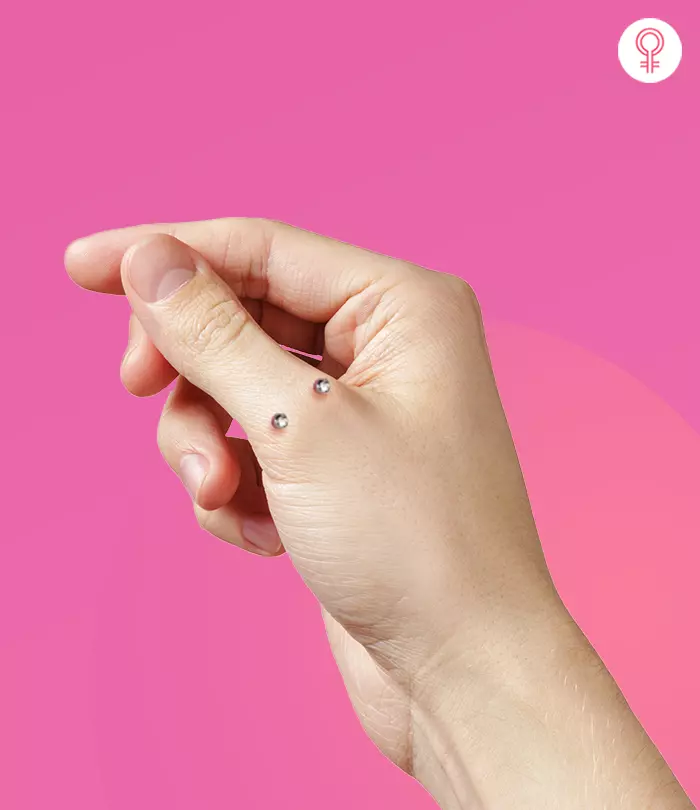
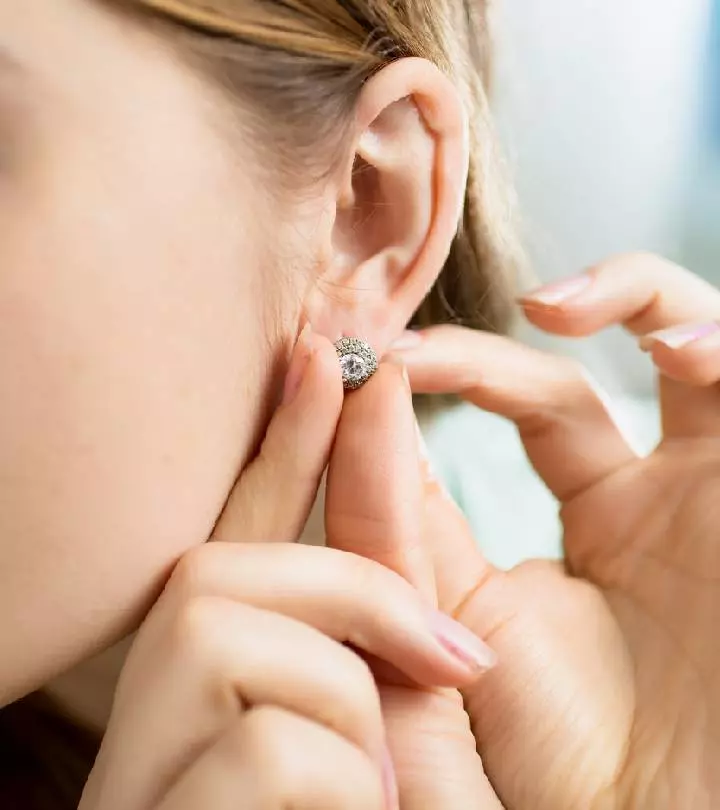

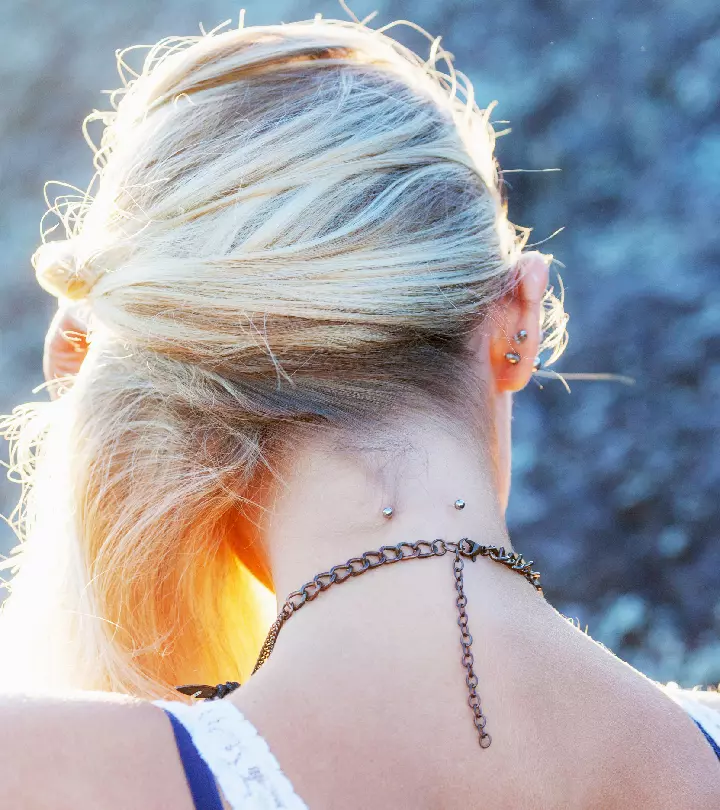






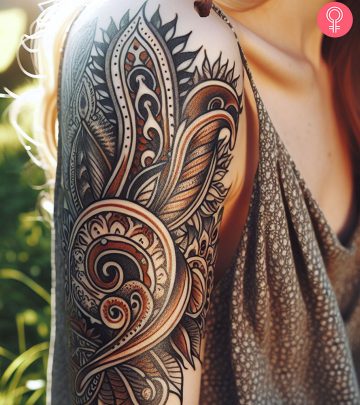


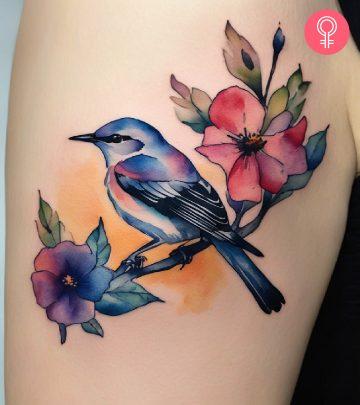
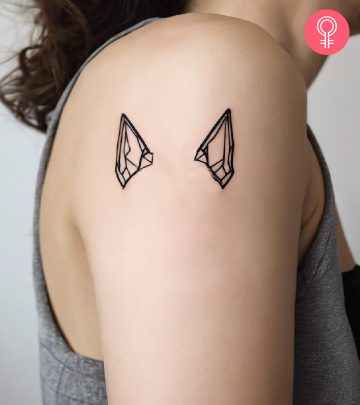


Community Experiences
Join the conversation and become a part of our empowering community! Share your stories, experiences, and insights to connect with other beauty, lifestyle, and health enthusiasts.